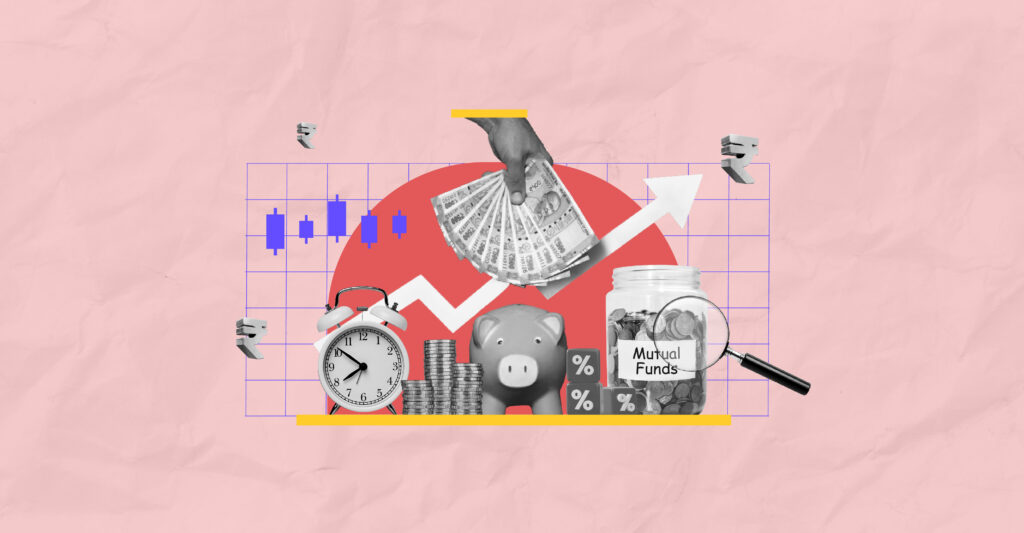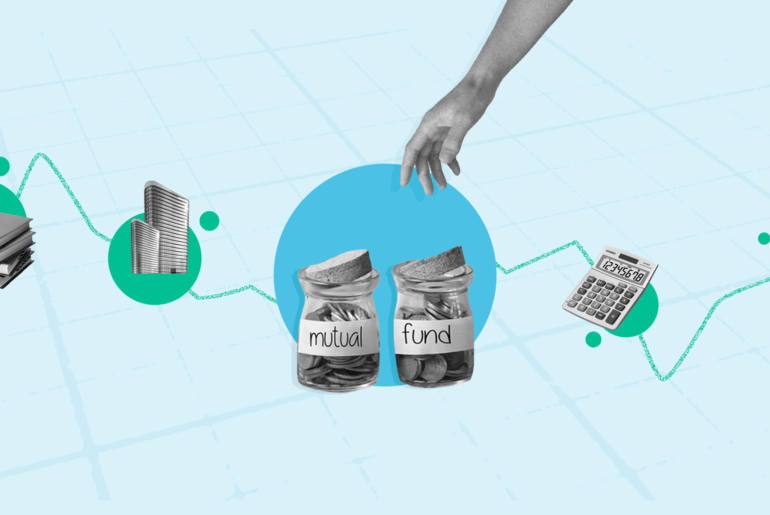Last Updated on Apr 22, 2025 by vanessa sequeira
Some investors like the thrill of fast-growing stocks. Others prefer a quieter strategy—one that pays them back steadily over time. That’s where high dividend mutual funds come in. These funds invest in companies known for distributing a portion of their profits to shareholders on a regular basis, often in the form of dividends. Think of it like this: instead of relying solely on stock price gains, you’re also getting periodic income along the way. It’s a popular approach among those who want a mix of stability and income. In this blog, we’ll break down what dividend paying mutual funds are and what to consider before investing in them.
Table of Contents
8 Best Dividend-Paying Mutual Funds
| Name | AUM (Cr) | CAGR 3Y (%) | Expense Ratio (%) | Absolute Returns – 1Y |
| LIC MF Dividend Yield Fund | 490.38 | 20.11 | 0.69 | 15.39 |
| UTI Dividend Yield Fund | 3,855.37 | 17.42 | 1.37 | 14.61 |
| ICICI Pru Dividend Yield Equity Fund | 4,995.41 | 23.97 | 0.73 | 13.55 |
| Sundaram Dividend Yield Fund | 862.57 | 16.53 | 1.21 | 7.34 |
| HDFC Dividend Yield Fund | 5,963.69 | 19.07 | 0.92 | 7.34 |
| SBI Dividend Yield Fund | 8,871.77 | 0.00 | 0.79 | 6.43 |
| Tata Dividend Yield Fund | 905.36 | 15.95 | 0.75 | 5.97 |
| Templeton India Equity Income Fund | 2,285.78 | 17.02 | 0.87 | 5.72 |
| Aditya Birla SL Dividend Yield Fund | 1,403.91 | 17.92 | 1.44 | 2.94 |
| Baroda BNP Paribas Dividend Yield Fund | 958.25 | 0.00 | 0.47 | 0.00 |
Note: The data is dated 22nd April 2025 The following parameters are used on Tickertape Mutual Fund Screener to get the list of the best dividend-paying mutual funds:
- Category > Equity > Dividend Yield Fund
- Absolute Returns – 1Y: Sort from highest to lowest.
You can add multiple parameters or create custom filters to analyse the mutual funds.
Details Of The Top 3 Dividend-Yielding Mutual Funds In India
LIC MF Dividend Yield Fund
Launched by LIC Mutual Fund on 20th April 1989, the LIC MF Dividend Yield Fund focuses on dividend-yielding stocks. One of the top dividend yield mutual funds backed by LIC of India, the fund manages an Asset Under Management (AUM) of over ₹14 crore.
UTI Dividend Yield Fund
Among the best dividend funds India, UTI Dividend Yield Fund is managed by UTI Asset Management Company, which began operations on February 1, 2003. The AMC is jointly promoted by four major financial institutions—SBI, LIC, Bank of Baroda, and Punjab National Bank—each holding an equal 25% stake in its paid-up capital.
ICICI Prudential Dividend Yield Equity Fund
Managed by ICICI Prudential Asset Management Company Ltd., this fund is a joint venture between ICICI Bank and UK-based Prudential Plc. ICICI Prudential AMC is one of the high-return dividend funds, with a strong focus on equity and dividend-oriented investment strategies.
Dividends are an important aspect of equity-related instruments. Some companies share a part of their profits with the shareholders in the form of dividends. While others don’t offer dividends, instead, they reinvest the profits to establish the company. Let’s understand dividend paying mutual funds in detail.
What Are Dividend-Paying Mutual Funds?
Some companies declare dividends on their stocks. Only when a company can make profits can it pay dividends. Hence, the financials of these companies would be strong. Like any other mutual fund, the performance of dividend yield funds, is subject to market conditions. These are considered moderate to high-level risk instruments.
Though the most common payout for dividend mutual funds is annual, a few schemes pay it monthly, quarterly, or daily. Though most companies strive to pay dividends per the agreement, it is never guaranteed. The amount of the dividend is also not fixed. The Net Asset Value (NAV) should reach the critical value for the fund house to pay the dividends. The fund managers will not limit themselves to the dividend yield but look at several other company growth prospects before investing. This makes dividend yield funds appealing for investors seeking mutual funds with high dividends and a balanced growth-income approach.
Who Should Invest In Dividend Paying Mutual Funds?
Dividend paying mutual funds can be ideal for first-time investors. Even investors looking for stable income can opt for these funds. However, as mentioned earlier, the dividend is not guaranteed as it depends on the company and the market conditions. For those interested in dividend funds for SIP or seeking tax-efficient dividend funds, these mutual funds may be a promising route with the potential for both returns and diversification.
Features Of Dividend Paying Mutual Funds
The two features of dividend mutual funds are
- Asset allocation: According to Securities and Exchange Board of India (SEBI) rules, a dividend yield mutual fund must invest at least 65% of the fund corpus in equity and equity-related instruments.
- Risk-reward ratio: As the dividend paying mutual funds deal with stocks, the performance can be volatile. However, compared to other equity-related schemes, long-term dividend mutual funds are less volatile.
Dividend From Mutual Fund Taxability
- If the investment holding period is less than 1 year, the returns are considered short-term capital gains and taxed at 15%.
- If the investment holding period is more than a year and the returns are over Rs 1 lakh per annum, you are taxed at 10%. No taxes are levied if the returns are less than Rs 1 lakh per annum.
Advantages Of Dividend Paying Mutual Funds
The advantages of best performing dividend funds are as follows:
- Generally, the underlying companies have strong financials.
- These high-potential dividend funds can offer a high yield on dividends in the long term.
- Investors can be exposed to equity dividend funds with less risk.
- Investors can expect stable income from dividend growth mutual funds at regular intervals.
Risks Associated with Dividend Paying Mutual Funds
Dividend paying mutual funds are associated with risks given below:
- When compared to other equity-based schemes, dividend yield fund performance may not be strong during a bull market.
- High dividend provision can be advantageous for the investor initially, but the company may not have enough opportunity to expand.
Difference Between Growth And Dividend Mutual Funds
Similar to dividends, growth is an aspect of mutual funds. In dividend mutual funds, the profits are paid to the investors, while in the case of growth, the profits are reinvested in the fund. Compared to the dividend mutual funds, the profits in the growth option are higher in the long term. Growth mutual funds are preferred by investors who are not looking for regular cash flows from the investment.
Factors to Consider Before Investing in Dividend Paying Mutual Funds
While high dividend mutual funds can be attractive for their income potential, they aren’t a one-size-fits-all solution. Here are some key factors to evaluate before adding them to your portfolio:
- Dividend Yield vs. Total Return: Dividend funds with the best returns might look appealing at first glance, but it’s important to assess how it fits into the fund’s overall performance. A fund with a high yield but poor capital appreciation may not serve your long-term goals as effectively as one with balanced growth and income.
- Fund Objective and Strategy: Not all dividend-focused funds are the same. Some may focus on stability and low volatility, while others might pursue aggressive yield targets that come with higher risk.
- Expense Ratio: The cost of managing a fund can directly impact your returns. Look for top dividend yield mutual funds with competitive expense ratios, especially if the dividend income is a key reason you’re investing. High fees can eat into the very payouts you’re seeking.
- Tax Implications: High-return dividend funds can be taxable depending on your holding period and the type of fund. It’s important to understand how these payouts will be taxed in your income bracket, particularly if you’re investing through a non-tax-advantaged account.
How to Analyse Mutual Funds With Tickertape Mutual Fund Screener
Finding the right investment that aligns with your investment goals and risk tolerance is difficult, especially when you are given several options. For this, you need to understand each and every mutual fund product, the performance metrics, the risk involved, etc. and compare them to find the right one for you. This is where the Tickertape Mutual Fund Screener comes to your rescue. It allows you to find the right mutual fund based on your financial goals.
- Preloaded filters
- 50+ filters
- Custom filters
- Custom mutual fund universe
- Pre-built screens
- Custom screens
- Export data offline
- Individual fund analysis
- Mutual fund Watchlist
Kickstart your investment journey today by logging on to Tickertape and linking your broker account. Before investing, ensure you understand mutual funds and their types and then proceed to analyse the fundamentals of a fund. Not just that, but keep your investment goals and risk appetite in mind. Happy screening and investing!
To Wrap Up
High dividend mutual funds offer a balanced route for those looking to earn regular income while staying invested in equity markets. They may not deliver the rapid growth of aggressive funds, but their focus on steady dividend-paying companies brings a layer of consistency that many investors value. As always, it’s important to assess your financial goals, risk tolerance, and investment horizon before adding them to your portfolio.
FAQs
1. What is a dividend in mutual funds?
The dividend is a portion of profits provided by a company to the shareholders for investing in their stock.
2. Are non-residents of India eligible for dividend paying mutual funds?
Yes. Non-residents of India are eligible to invest in dividend paying mutual funds.
3. How to know if the fund manager has invested your money in a dividend mutual funds scheme?
As per the SEBI rules, the mutual funds need to disclose entire portfolios of all schemes monthly on their website.
4. What are the top monthly dividend paying mutual funds in India?
You can use the Tickertape Mutual Fund Screener to find the top monthly dividend paying mutual funds in India based on returns. However, the pay-out schedule on the dividend mutual funds varies with the scheme.
5. Do mutual funds pay dividends?
A dividend is a portion of the company’s profits paid to the shareholders. But not all mutual funds pay dividends. Some companies reinvest the profit back into the company for growth and expansion.
- Long Term Mutual Funds in India (2025) - Oct 29, 2025
- Muhurat Trading in 2025 – Meaning, Benefits, Latest Date and Timings - Oct 8, 2025
- How To Withdraw Mutual Funds? - Jun 6, 2025





